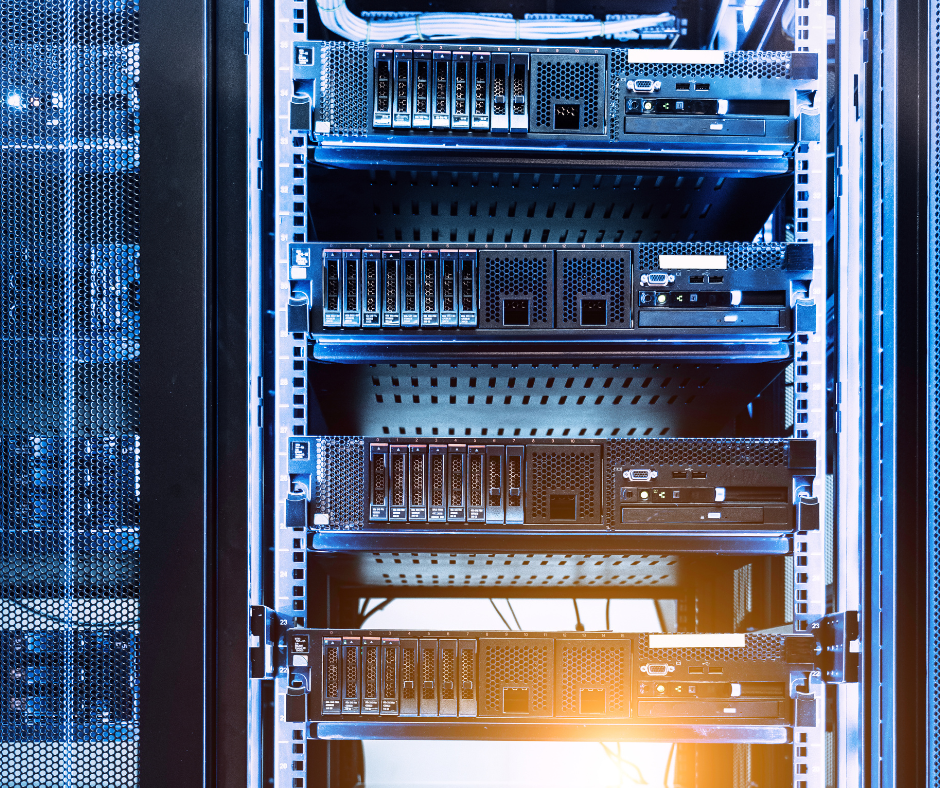
U.S. Data Centers: 7
Every swipe, stream, and search you make depends on something unseen yet
Learn More →

In our hyper-connected world, a sudden power outage or even a momentary dip in voltage can spell disaster, from corrupted data and hardware failure to costly downtime in critical operations. The UPS, or Uninterruptible Power Supply, is the unsung hero protecting against these power anomalies. It is much more than just a large battery. A UPS is a sophisticated power management system that provides clean, consistent electrical power to your sensitive equipment.
But not all UPS systems are created the same way! They are designed for different architectures and to handle different degrees of power protection and load. Understanding the difference and utilizing them where they are most applicable is crucial to ensure your home or data centers stay powered and protected.
In this blog, we will discuss the three main types of UPS systems: standby(offline), line interactive, and double conversion (online), their mechanics, and real-world applications.
These are the most popular and cost-effective types of UPS, mainly used for non-critical workstations, home networking equipment, and personal PCs.

Under normal conditions, the Standby UPS simply passes utility power directly through to the protected equipment. The internal inverter/charger is dormant (offline), simultaneously charging the battery. When the incoming utility power drops below a safe threshold or fails, a transfer switch quickly activates, switching the load to the battery-powered inverter. This switching process takes a few milliseconds, a brief delay that most modern power supplies can easily bridge.
Topology: Most cost-effective and simplest option
Power Conditioning: Minimal; relies heavily on the utility power being relatively clean.
Transfer Time: Has a noticeable transfer time, usually between two and ten milliseconds.
Efficiency: Very high, as the inverter is turned off during regular operations
Capacity: usually less than 1.5kVA
With better protection without the expense of a complete online system, the Line-Interactive UPS is a major improvement over the Standby design. For many server rooms and small to medium-sized enterprises (SMBs), it is the workhorse.

Like the Standby unit, the Line-Interactive UPS passes utility power directly to the load. However, it incorporates a special multi-tap transformer or a magnetic inductor (known as a ferroresonant transformer in older designs) that is constantly engaged. This component, called an Automatic Voltage Regulator (AVR), allows the UPS to automatically boost (step-up) or reduce (step-down) the output voltage in response to brownouts (low voltage) or surges (high voltage) without ever switching to battery power.
The inverter is still only activated when utility power fails, but because the AVR handles most common voltage fluctuations, the battery is conserved, and the system is more resilient.
Topology: More robust than Standby; integrates an AVR.
Power Conditioning: Good; actively corrects voltage fluctuations (sags and surges).
Transfer Time: Still has a transfer time, but the AVR minimizes the need for a full battery switch.
Efficiency: High, though slightly lower than Standby due to the constantly engaged AVR circuitry.
Capacity: Medium range (typically 1.5 kVA to 5 kVA).
The Highest level of protection is offered by the double conversion (online) UPS, which creates a whole barrier between the sensitive load and the utility power. For mission-critical applications where even a millisecond of disruption or slight power anomaly cannot be tolerated, it is the industry standard.

How it operates
The term “double conversion” is key. The UPS constantly converts the incoming AC utility power, first into DC power (rectification) and then back into clean AC power (inversion).
Because the inverter is always active and always powering the load, the output is a continuous, perfectly filtered sine wave, completely isolated from any noise, surges, or sags on the utility line. If utility power fails, the rectifier simply stops working, and the batteries seamlessly take over feeding the DC bus, resulting in zero transfer time.
Topology: Most robust; provides complete power isolation.
Power Conditioning: Excellent; regenerates a perfect sine wave.
Transfer Time: Zero; seamless transition to battery power.
Efficiency: Lower than the others (especially at light loads) because the conversion process involves continuous energy loss like heat. However, modern designs often include an “Eco-Mode” (or high-efficiency mode) to bypass the double-conversion when utility power is stable, boosting efficiency at the expense of pure isolation.
Capacity: Wide range, from small tower units to massive, modular data center systems (up to several MVA).
The type of UPS system you choose, standby, line-interactive, or double-conversion (online), will depend on how important your equipment is and how much downtime or power fluctuations your operations can handle. Standby UPSs are great for personal or non-critical settings, but line-interactive systems are a good compromise between affordability and protection for small to medium-sized organizations. On the other hand, double-conversion UPS systems provide the highest level of power reliability for mission-critical situations such as data centers, hospitals, and financial institutions.
We at Gruber Power Services are aware that every facility is unique. With their expertise in UPS system design, installation, maintenance, and round-the-clock support, our team of professionals guarantees that your vital operations continue to run smoothly and securely. We provide solutions that are specific to your power requirements, whether you’re looking to upgrade your infrastructure, prepare for redundancy, or implement preventative maintenance programs.
To discuss your UPS system needs or to arrange a consultation, get in touch with Gruber Power Services right now at 800.658.5883 or 602.863.2655 or email support@gruber.com
Every swipe, stream, and search you make depends on something unseen yet
Learn More →In our hyper-connected world, a sudden power outage or even a momentary
Learn More →UPS system design considerations Reliable power is essential in today’s connected world.
Learn More →